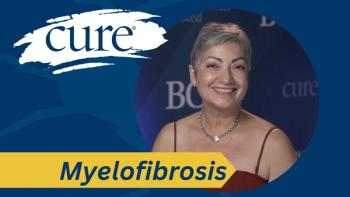
Exercise Improves Physical Abilities in Patients With Multiple Myeloma
Patients with multiple myeloma who are undergoing systemic treatment can see improvements from exercise, a recent study shows.
Strength training and walking improves the important factors of physical abilities for patients with multiple myeloma as they undergo systemic treatment, according to findings presented by Dr. Jens Hillengass, a professor of oncology and internal medicine at Roswell Park Comprehensive Cancer Center, Buffalo, New York, at the 20th International Myeloma Society (IMS).
The five exercises used in the study were activity measure for post-acute care/basic mobility short form, six-minute walk test, 30-second sit-to-stand test, timed up-and-go test and pain visual analogue scale. These were used to measure activities of daily living, mobility, endurance, frailty and pain tolerance in the strength building arm vs the walking arm.
Both groups showed enhanced performance of mobility through the five categories for measurement and the 30-second sit-to-stand test showed lasting and improved results post intervention. However, the progress gained with mobility and the timed-up-and-go tests were partially lost post intervention and the six-minute walk test gains were unchanged.
“The reason for this study is basically because patients ask us to do it. Because (patients with multiple myeloma) live longer and have deeper remission, they want to go back to their normal life. Oftentimes, the question is, can I do sports? Can I do physical activity? Can I go to the gym? ... Usually, my answer was I don't know, there aren’t a lot of data,” Hillengass explained. “We know that frailty is a parameter that we measure and that we assess when we see our patients and we decide if they are transplant-eligible or chimeric antigen receptor CAR-T cell-eligible. And frailty is something we can work on especially with, in my opinion, physical activity. So, the aims of this study were to assess this impact.”
Physical exercise is known to improve functional performance and patient fitness; however, little is known if patients with multiple myeloma, especially those with bone disease, can benefit from an exercise regimen. Investigators set out to evaluate data on the safety and efficacy regarding physical exercise for patients with multiple myeloma to enhance functional performance and to see if frailty scores, which is an important risk-factor for patients with multiple myeloma, which can be improved by physical activity.
Each patient had the choice to participate in one of the two groups based on exercise intervention type: group 1 (24 patients) underwent supervised resistance training twice weekly, in person for a duration of six months. Group 2 (18 patients) underwent behavioral intervention through remote prompts, to achieve 150 to 300 minutes of walking per week for six months. The non-randomized nature of the trial enabled patients to participate despite their distance from the trial institution or COVID-19–related issues; however, five patients were unable to complete the trial for various reasons, including COVID-19–related reasons.
Across both cohorts, age (63.9 years vs 62.2 years), body mass index and race were similar. Seventeen patients (70.8%) in the strength building cohort compared with nine patients (50.0%) in the walking cohort were ECOG performance status zero. Seven (29.2%) patients in the strength building arm were ECOG performance status one compared with eight (44.4%) patients in the walking arm.
In the strength building arm, one patient (4.2%) had active disease and 23 (95.8%) had inactive disease. In the walking arm, three patients (16.7%) had active disease and 15 (83.3%) had inactive disease. There were 14 (58.3%) female patients in the strength building arm and 12 (66.7%) in the walking arm. The timepoints from baseline were 24% (100.0%) vs 17% (94.4%) to six-month post-intervention, 19% (79.2%) vs 11% (61.1%).
Hillengass reported that no patients from either intervention group experienced grade three or higher adverse events (AEs), including no new fractures. Musculoskeletal soreness was the main AE reported. The two interventions were safe for patients with multiple myeloma and were effective both immunologically and functionally.
Further evaluation of strength building and walking is underway in the Host-Factor study, which consists of 100 patients who will undergo six months of resistant training twice a week. In this study, investigators will measure bone density, body composition pre- and post-intervention, immune flow, quality of life and fatigue.
“When we combined the two exercise groups, we saw an improvement of T-cell exhaustion marker. The ratio between exhausted vs non-exhausted T cells improved for patients pre- and post-intervention, which was encouraging to us. We're looking to evaluate specific antibodies and CAR T cells next,” Hillengass explained.
For more news on cancer updates, research and education, don’t forget to




